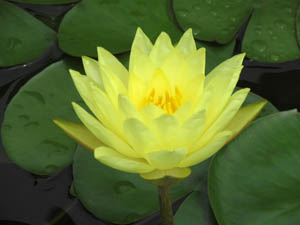Frequently Asked Questions
 Are The Medicinal Herbs and Nutrients We Use Safe and Effective?
Are The Medicinal Herbs and Nutrients We Use Safe and Effective?Does Acupuncture Hurt?
How Does Acupuncture Work?
What Can You Expect From Your Treatments?
What Is Craniosacral Acupuncture?
What is the Eclectic Triphasic Medical System and the
Integrative Healthcare Consulting Program?
What Is Oriental Medicine?
Are The Medicinal Herbs and Nutrients We Use Safe and Effective?
John and I have researched medicinal herbs and nutrients extensively to find the best quality botanicals and nutrients available. We feel it is not only important to have formulas which are put together well but also to have formulas which have excellent track records in terms of safety and efficacy. Hence, we use herbs from suppliers whose herbs are cultivated, harvested and prepared so as to insure optimum efficacy and herbs that are manufactured according to Current Good Manufacturing Practices. We pride ourselves in keeping up to date on herbal safety issues as well as any possible herb-drug or supplement-drug interactions. All this insures you that the botanicals and nutrients we give you are safe to consume and are of the highest quality and efficacy available.
Does Acupuncture Hurt?
Acupuncture needles are very fine and flexible, about the size of a strand of human hair. Most people find the experience very relaxing and hardly notice that the needles have been inserted. Only pre-sterilized and disposable needles are used. Treatments often result in the patient entering a deep state of relaxation and well-being which further serves to promote the healing process.
How Does Acupuncture Work?
Acupuncture is based on an energetic model rather than the biochemical model used in Western medicine. The ancient Chinese recognized that vital energy or Qi (pronounced “chee”) is the key to all life forms and life processes. This vital energy flows in the human body along specific pathways called meridians, which are associated with physiological systems in the body. These pathways of energy communicate with the body at specific points called acupuncture points. Disease arises because of a blockage or an imbalance of Qi in the energetic pathways. Acupuncture points are stimulated to harmonize the circulation of Qi, bringing the body, mind and spirit back into balance. For a more detailed description on acupuncture please read our article entitled How Acupuncture Works.
What Can You Expect From Your Treatments?
The first office visit lasts an hour and forty five minutes to two hours. We take a detailed medical history, evaluate your condition and propose a treatment plan. We combine Chinese and Japanese acupuncture together with craniosacral acupuncture. The treatments assist your body in activating its own healing responses to help bring it into a natural state of balance. When indicated we use Chinese herbal medicine, evidence-based Western herbal medicine, nutritional supplements, moxibustion, acupressure, dietary recommendations, Tuina and Qi Gong as adjuncts to our treatments. We remain with you the entire session, tailoring our treatments to meet your specific needs and sensitivities. You will be given recommendations for self-care as needed. The return office visits last one hour and fifteen minutes to one and a half hours.
We not only treat your acute or chronic problems but take into account the whole fabric that goes into making you the unique person that you are. This includes any underlying physical, emotional, mental and spiritual needs you may have. Our treatments are characterized by being very focused and compassionate. Our integrative approach to health care encourages working in conjunction with other health care practitioners. We are trained to know when to refer out to medical doctors.
What Is Craniosacral Acupuncture?
Craniosacral acupuncture is an integration of craniosacral energetics with acupuncture. Craniosacral energetics involve the palpation of the wavelike craniosacral rhythm. Trained practitioners are able to palpate the motion of the craniosacral rhythm, feel the restrictions in the body, and determine the source of an injury or dysfunction. Once the restriction patterns and blockages are located, it can be treated with acupuncture and gentle manual releases. The combination of these two energetic modalities produces a deep and powerful effect which works on many levels in the body, making it possible to treat a wide range of conditions. Many problems can be corrected with acupuncture before the use of drugs or surgery is required. For a more detailed description on craniosacral acupuncture please read our article entitled What is Craniosacral Acupuncture?.
What is the Eclectic Triphasic Medical System?
Donald Yance’s Eclectic Triphasic Medical System (ETMS) emphasizes the practice of “healthy medicine”, which is aimed at the root source of ill-health, with the primary focus being to bring about harmony and balance throughout the body. When approaching a disease. . . it is important to formulate a balanced protocol that addresses both the characteristics of the disease as well as the energetic weaknesses of the individual.
John and I have been working closely with Donald Yance since March 2009 as practitioners of the Integrative Healthcare Consulting Program he established and we find it has helped our patients immensely. We have completed the Level One Professional Clinical Training program from April 26 – May 1, 2010 and the Level Two Advanced Clinical Applications of the Eclectic Triphasic System September 27 – October 2, 2010 with Donald Yance in Ashland, Oregon.
What Is Oriental Medicine?
Traditional Oriental Medicine is a comprehensive system of health care with a clinical tradition of over 3000 years. It is used by one quarter of the world’s population. It includes the use of acupuncture, moxibustion, herbal medicine, massage, dietary therapy, therapeutic exercise and meditation. The World Health Organization has endorsed the use of acupuncture for treating over 200 disorders. It will very rarely interfere with any treatment you may already be receiving and is an effective adjunct in preventive care.




